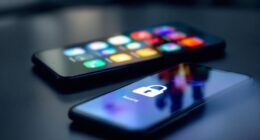Five economic warning lights are flashing red as recession probabilities for 2025 surge to 60% according to prediction markets. The recent 3% plunge in S&P 500 futures has sent investors scrambling for safer assets, reflecting growing concerns over economic stability. This market reaction isn’t just Wall Street drama—it’s reflecting genuine economic anxiety.
The inverted yield curve, often called the financial world’s crystal ball, continues to signal trouble ahead. When short-term bonds pay more than long-term ones, it’s like your younger sibling suddenly becoming taller than you—something’s not right. Historically, this indicator has predicted recessions with remarkable accuracy.
President Trump’s proposed tariff policies are further stoking these fears. Think of tariffs as speed bumps in the economic highway—they might slow down reckless driving, but they also make everyone’s commute more expensive. JPMorgan has warned that these sustained tariff policies could lead to an economic downturn this year. Economists worry these trade barriers could trigger retaliatory measures from global trading partners, potentially igniting a worldwide trade war.
The volatility index—affectionately known as Wall Street’s “fear gauge”—has jumped above 30, indicating investors are bracing for a bumpy ride. This market nervousness is coinciding with early signs of GDP contraction and concerning employment trends, forming a perfect storm of economic warning signs. The uncertain regulatory environment surrounding cryptocurrencies has further contributed to market instability, with global regulations varying dramatically across jurisdictions.
Corporate America isn’t feeling particularly optimistic either. Companies are reporting margin pressures and slowing investment, often precursors to workforce reductions. These business decisions ripple through the economy like a stone thrown in a pond, eventually reaching consumer spending and housing markets. Despite recent expansion in the US market during the fourth quarter of 2024, experts warn that depleted household savings will likely contribute to slower economic growth in the coming year.
The Federal Reserve may need to shift gears quickly, potentially cutting interest rates to cushion any economic downturn. However, with inflation pressures from tariffs potentially pushing prices higher, the Fed faces a delicate balancing act.
Global markets are particularly vulnerable to these tensions. Currency fluctuations and disrupted supply chains could amplify economic stresses, making international cooperation more essential than ever for weathering the potential storm brewing on the economic horizon.









